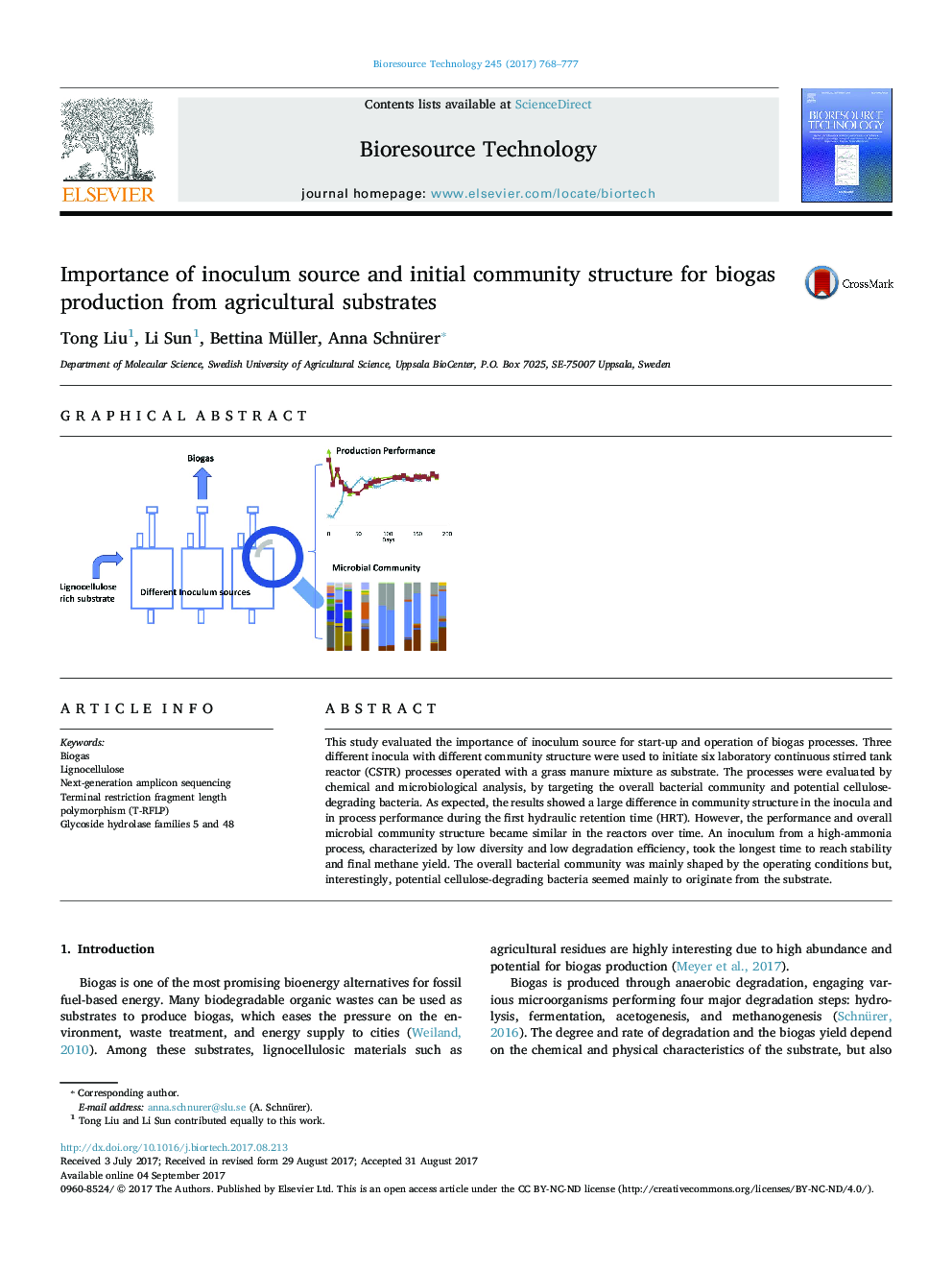| Article ID | Journal | Published Year | Pages | File Type |
|---|---|---|---|---|
| 4996831 | Bioresource Technology | 2017 | 10 Pages |
â¢Different inoculum resulted in different performance during the initial HRT of operation.â¢High ammonia inoculum with low diversity showed the longest time to reach final methane yield.â¢Performance and overall microbial community structures unified between reactors over time.â¢The overall bacterial community was mainly shaped by the operating conditions.â¢Potential cellulose degrading bacterial seem mainly to originate from the substrate.
This study evaluated the importance of inoculum source for start-up and operation of biogas processes. Three different inocula with different community structure were used to initiate six laboratory continuous stirred tank reactor (CSTR) processes operated with a grass manure mixture as substrate. The processes were evaluated by chemical and microbiological analysis, by targeting the overall bacterial community and potential cellulose-degrading bacteria. As expected, the results showed a large difference in community structure in the inocula and in process performance during the first hydraulic retention time (HRT). However, the performance and overall microbial community structure became similar in the reactors over time. An inoculum from a high-ammonia process, characterized by low diversity and low degradation efficiency, took the longest time to reach stability and final methane yield. The overall bacterial community was mainly shaped by the operating conditions but, interestingly, potential cellulose-degrading bacteria seemed mainly to originate from the substrate.
Graphical abstractDownload high-res image (106KB)Download full-size image
